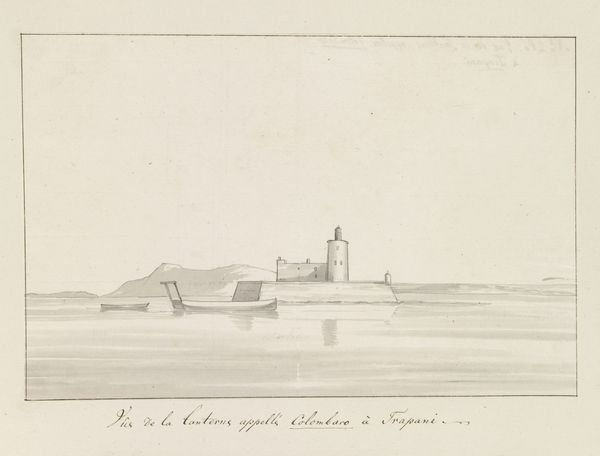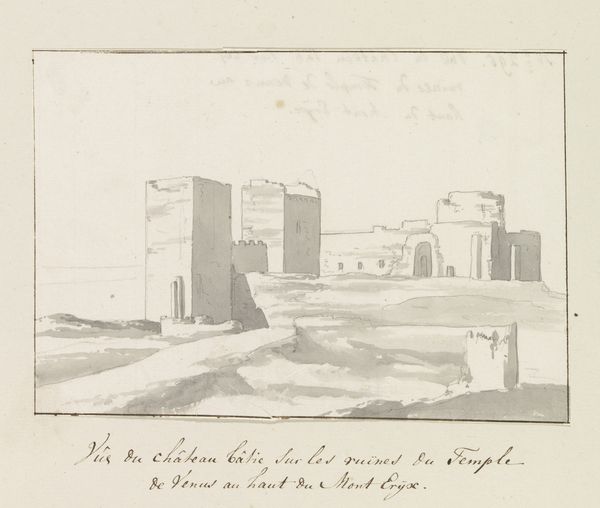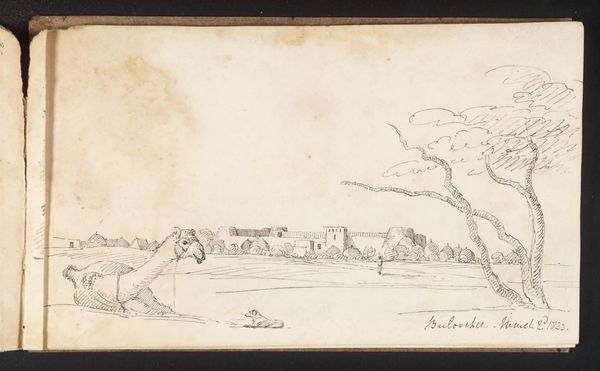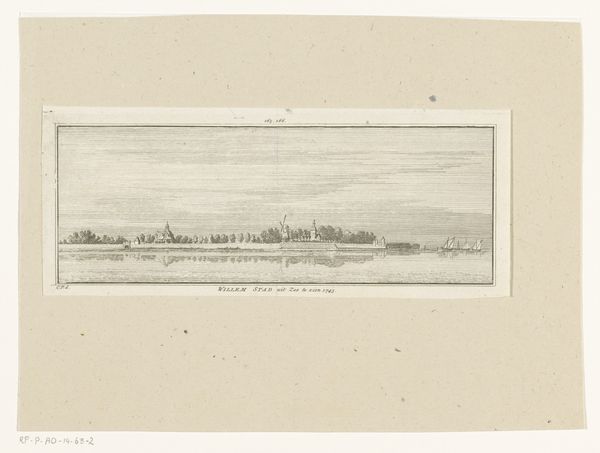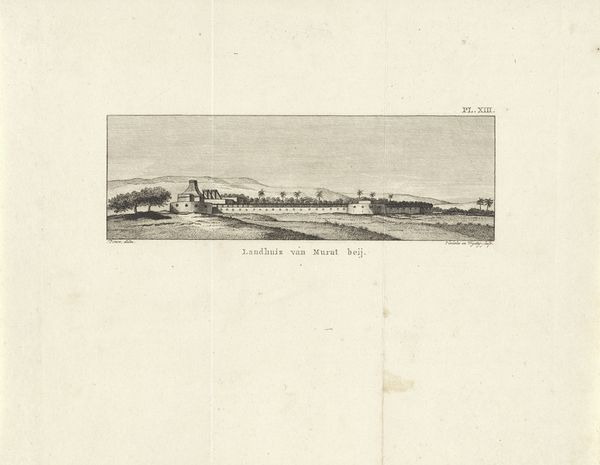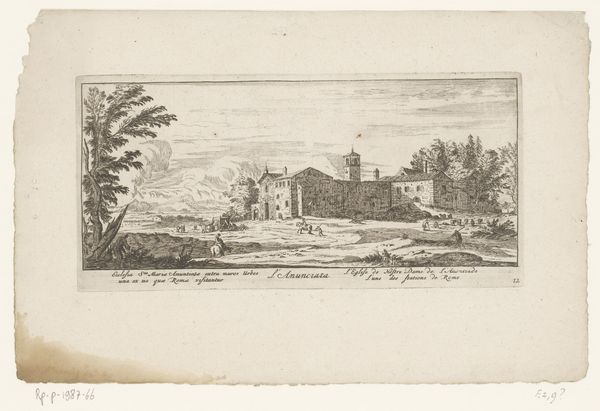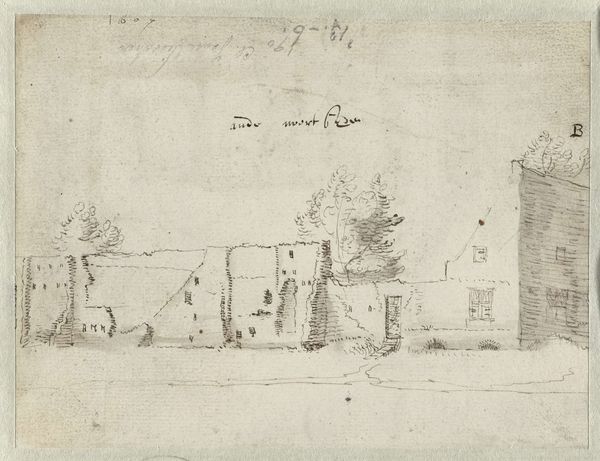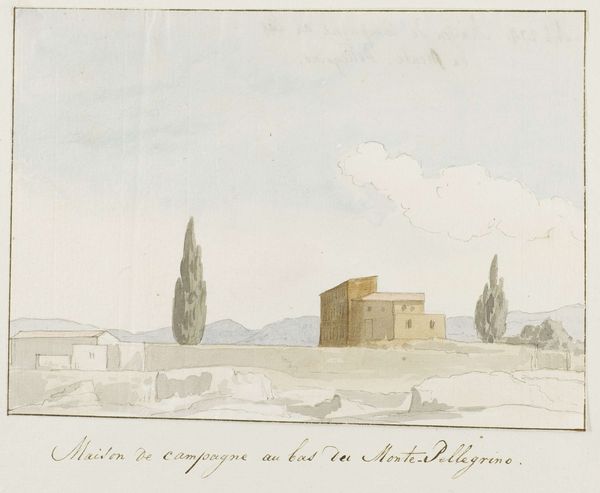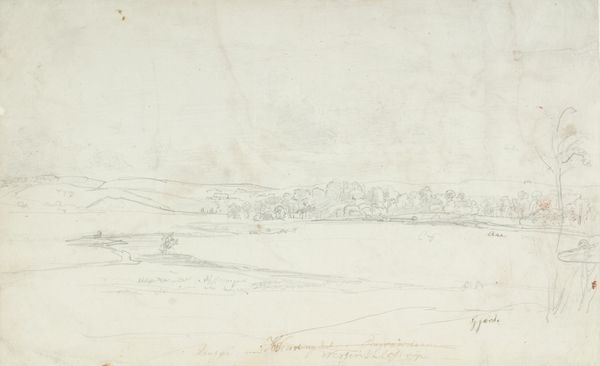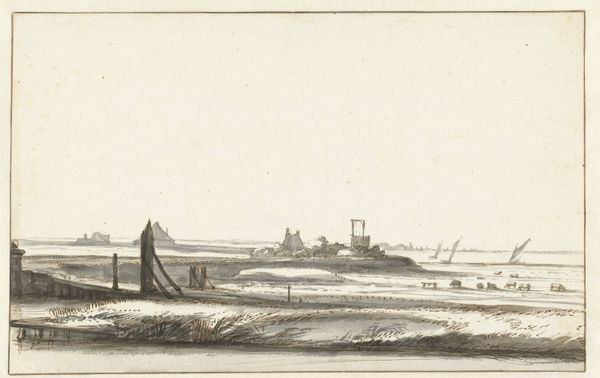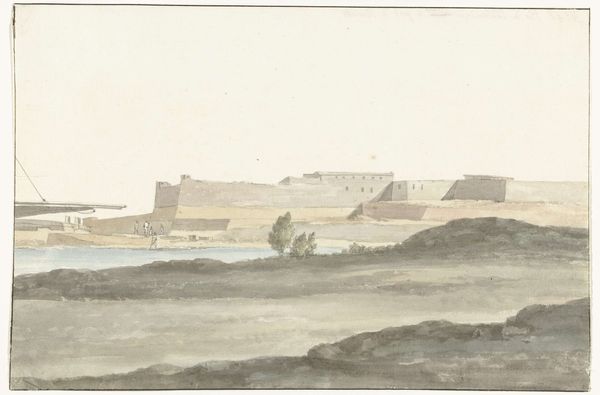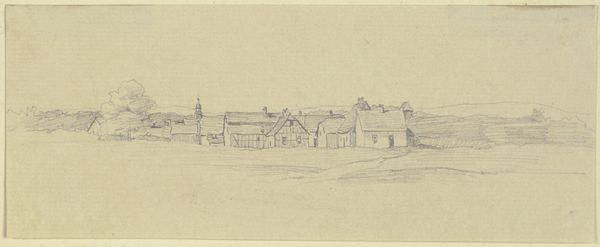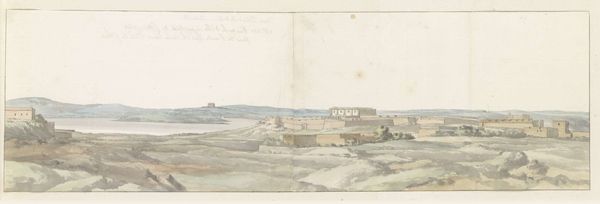
drawing, pencil
#
architectural sketch
#
drawing
#
neoclacissism
#
landscape
#
pencil
#
cityscape
Dimensions: height 148 mm, width 205 mm
Copyright: Rijks Museum: Open Domain
Curator: A first glance tells me this is all about capturing the stark stillness of a sun-baked landscape. There’s a clear, almost geometric division of space with muted tones enhancing the somber atmosphere. Editor: Precisely! We're looking at a pencil drawing from 1778 titled "View of a Saltworks near a Large Salt Pan in Trapani," by Louis Ducros, currently held in the Rijksmuseum's collection. Ducros, known for his detailed landscapes, offers a glimpse into the salt production of the late 18th century. Curator: The linearity is striking, isn’t it? See how the architectural elements, the building itself, act as compositional anchors? There is almost no ornamentation – pure, distilled form. The lines are almost mathematical, suggesting clarity and reason, elements of Neoclassicism Editor: It is fascinating to see how the artist contextualizes industry within a social landscape. This composition allows viewers to contemplate the labor and trade shaping European economies at the time, even down to how workers engage within its space. Notice the arrangement of people—some working on the salt piles, others seemingly in transit. The composition is not merely aesthetic; it presents a moment in their daily life, embedded within the context of resource production. Curator: Agreed. Yet I find the real innovation lies in the manipulation of tone and shadow, adding a psychological weight. How does the quality of light hitting forms lend depth to the affect of stillness, especially when placed against architectural precision? These are features integral to grasping Ducros' intention here. Editor: Without question! By presenting this vista within a socio-economic frame, Ducros not only immortalizes this industry's space and actors but he invites speculation on the structures dictating life's rhythms for 18th-century Europeans. Curator: Seeing it from these dual vantage points allows a much richer engagement. The eye comprehends line and light while understanding of its time and place. Editor: Indeed. Appreciating both the formal artistic language, and its historical meaning enables us to understand the significance of Ducros' depiction, beyond simple aesthetics, to historical narration.
Comments
No comments
Be the first to comment and join the conversation on the ultimate creative platform.
